
Kielce: The Hidden Gem of Poland
Discover Kielce, a captivating blend of history, culture, and nature in the heart of Poland. Experience its rich heritage, vibrant arts scene, and stunning landscapes.
Kielce, located in the heart of Poland, is a city brimming with history, culture, and natural beauty. Nestled in the Świętokrzyskie Mountains, Kielce offers a unique blend of urban charm and outdoor adventures. The city's rich past is reflected in its stunning architecture, with landmarks such as the Kielce Cathedral and the Palace of the Kraków Bishops standing as proud testaments to its heritage. Art enthusiasts will find Kielce a haven, with numerous galleries and cultural centers, including the Kielce Cultural Center and the BWA Art Gallery. The city's vibrant arts scene is complemented by a lively calendar of events and festivals, making every visit an exciting experience. For nature lovers, the surrounding Świętokrzyskie Mountains provide ample opportunities for hiking, cycling, and exploring pristine landscapes. The Kadzielnia Reserve, with its breathtaking cliffs and caves, is a must-visit for those seeking adventure. Meanwhile, the city's parks and green spaces offer serene spots for relaxation and leisurely strolls. Kielce is also known for its culinary delights. Traditional Polish cuisine can be savored in cozy local restaurants, where dishes like pierogi and kielbasa are prepared with authentic recipes. The city's friendly atmosphere and warm hospitality ensure that every visitor feels right at home. Whether you're interested in history, culture, nature, or cuisine, Kielce promises a memorable and enriching experience. Its blend of old-world charm and modern amenities makes it a perfect destination for travelers seeking to explore the lesser-known treasures of Poland.
Local tips in Kielce
- Visit the Kadzielnia Reserve early in the morning to avoid crowds and enjoy the best lighting for photography.
- Check out the local markets for unique souvenirs and fresh produce. The Kielce Market Square is a great place to start.
- If you're visiting in the summer, don't miss the Kielce Cultural Summer Festival, which features a variety of performances and events.
- Explore the city on foot or by bike to fully appreciate its architecture and hidden gems.
- Learn a few basic Polish phrases; locals appreciate the effort and it will enhance your experience.
Kielce: The Hidden Gem of Poland
Kielce, located in the heart of Poland, is a city brimming with history, culture, and natural beauty. Nestled in the Świętokrzyskie Mountains, Kielce offers a unique blend of urban charm and outdoor adventures. The city's rich past is reflected in its stunning architecture, with landmarks such as the Kielce Cathedral and the Palace of the Kraków Bishops standing as proud testaments to its heritage. Art enthusiasts will find Kielce a haven, with numerous galleries and cultural centers, including the Kielce Cultural Center and the BWA Art Gallery. The city's vibrant arts scene is complemented by a lively calendar of events and festivals, making every visit an exciting experience. For nature lovers, the surrounding Świętokrzyskie Mountains provide ample opportunities for hiking, cycling, and exploring pristine landscapes. The Kadzielnia Reserve, with its breathtaking cliffs and caves, is a must-visit for those seeking adventure. Meanwhile, the city's parks and green spaces offer serene spots for relaxation and leisurely strolls. Kielce is also known for its culinary delights. Traditional Polish cuisine can be savored in cozy local restaurants, where dishes like pierogi and kielbasa are prepared with authentic recipes. The city's friendly atmosphere and warm hospitality ensure that every visitor feels right at home. Whether you're interested in history, culture, nature, or cuisine, Kielce promises a memorable and enriching experience. Its blend of old-world charm and modern amenities makes it a perfect destination for travelers seeking to explore the lesser-known treasures of Poland.
When is the best time to go to Kielce?
Iconic landmarks you can’t miss
Kadzielnia Nature Reserve
Explore the breathtaking Kadzielnia Nature Reserve, a stunning natural wonder in Kielce, Poland, perfect for hiking, wildlife observation, and relaxation.
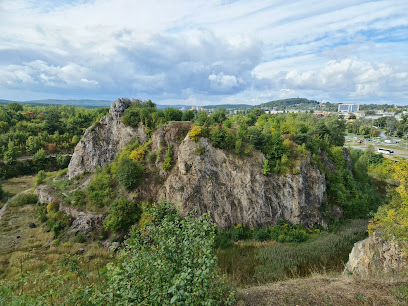
Kielce Market Square
Discover the vibrant Kielce Market Square, a cultural hub filled with history, local cuisine, and lively events in the heart of Poland.
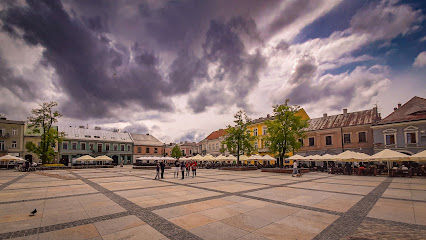
Museum of the Kielce Countryside
Explore the traditional Polish rural life and rich ethnographic heritage at the Museum of the Kielce Countryside in Tokarnia.
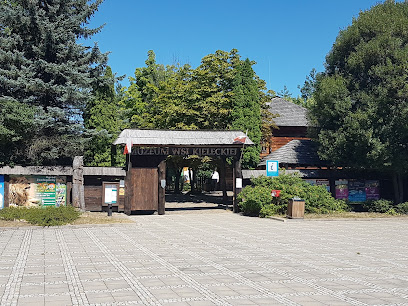
Binkowski Resort and Waterpark
Experience the thrill of water fun at Binkowski Resort and Waterpark in Kielce, a family-friendly destination for all ages.
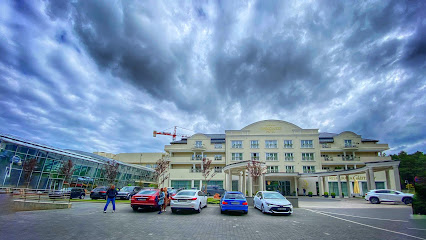
Stanisław Staszic Municipal Park
Explore the lush landscapes and cultural treasures of Stanisław Staszic Municipal Park, a tranquil oasis in the heart of Kielce, Poland.
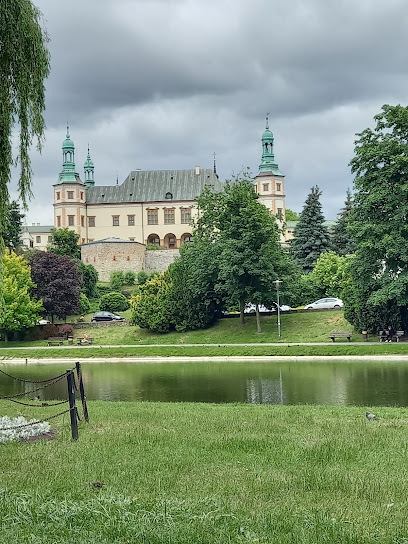
Park Rozrywki Fly Sky
Discover the thrills and family fun at Fly Sky Amusement Park in Kielce, a must-visit destination for adventure seekers and families alike.
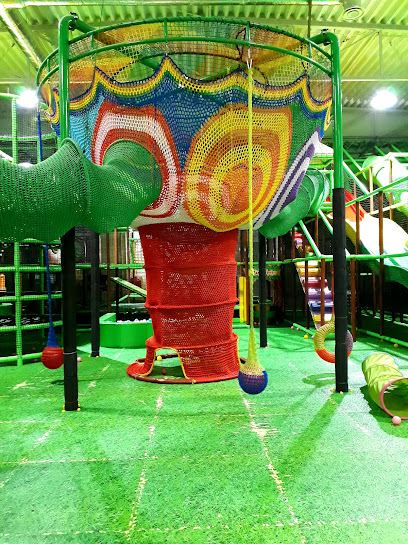
Ślichowice Rock Reserve
Discover the breathtaking beauty of Ślichowice Rock Reserve – a natural wonder in Kielce, perfect for adventurers and nature lovers.
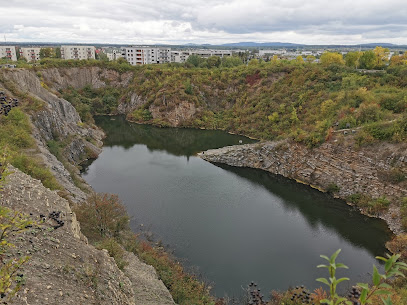
Bazylika katedralna Wniebowzięcia NMP w Kielcach
Discover the beauty and spirituality of Kielce's Basilica Cathedral, a captivating blend of gothic and baroque architecture with a rich history.
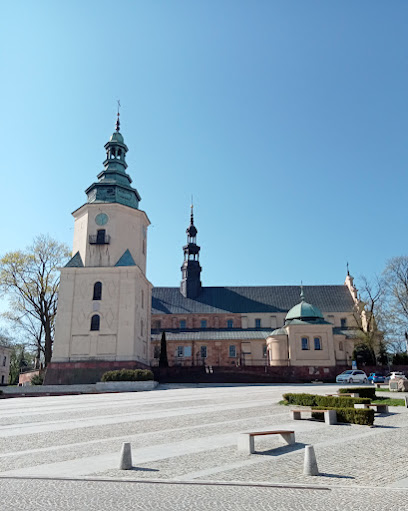
Kielce Cultural Center
Experience art, culture, and community at the Kielce Cultural Center, a vibrant hub for creativity in the heart of Poland.
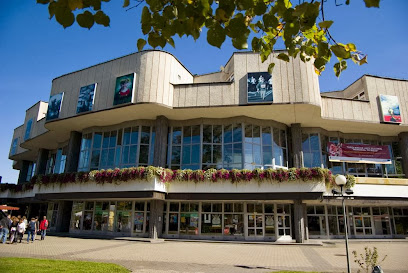
Kielce Botanical Garden
Explore the tranquil beauty of Kielce Botanical Garden, a stunning showcase of diverse plant life and serene landscapes for nature lovers and tourists alike.
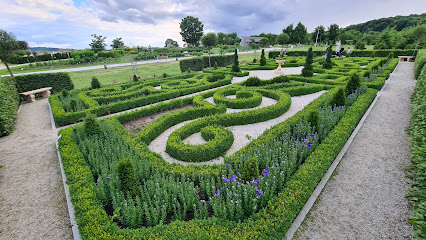
The National Museum in Kielce
Discover Poland's rich cultural heritage at The National Museum in Kielce, featuring an impressive collection of art and historical artifacts.
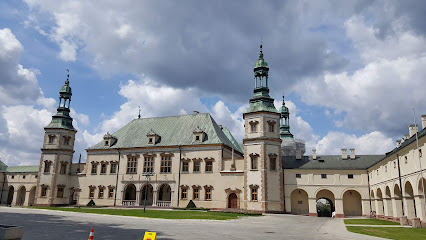
Centrum Neandertalczyka
Explore the fascinating world of Neanderthals at Centrum Neandertalczyka in Chęciny, Poland - an immersive journey into human evolution.
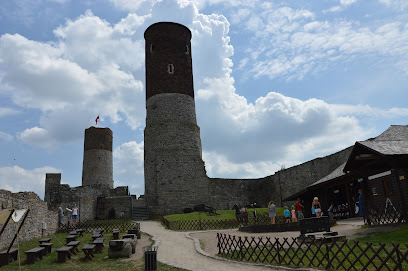
Kadzielnia Caves
Uncover the beauty and adventure of Kadzielnia Caves in Kielce, Poland – a stunning natural wonder with rich geological history.
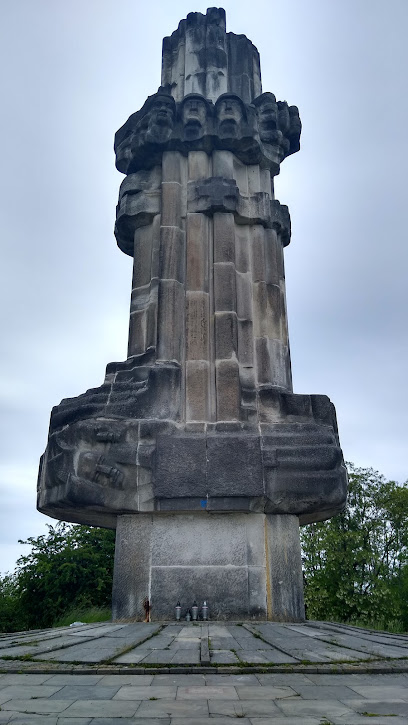
Henryk Sienkiewicz Statue
Discover the Henryk Sienkiewicz Statue in Kielce: a captivating tribute to Poland's literary genius, surrounded by vibrant culture and history.
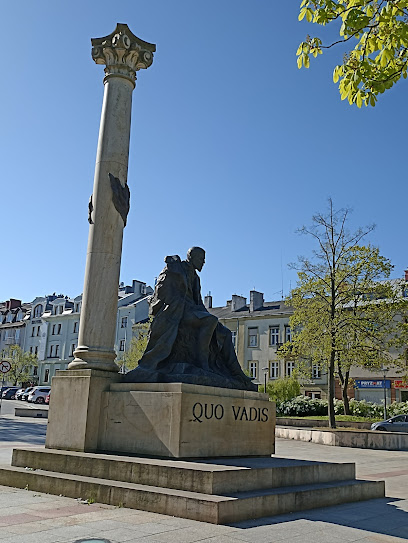
Wietrznia Nature Reserve
Discover the serene beauty of Wietrznia Nature Reserve in Kielce, a paradise for nature lovers with stunning landscapes and rich biodiversity.
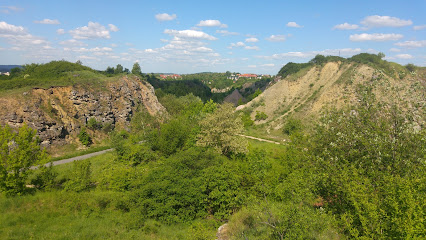
Unmissable attractions to see
Kadzielnia Nature Reserve
Discover the breathtaking trails, caves, and diverse wildlife at Kadzielnia Nature Reserve in Kielce, Poland, a true gem for nature enthusiasts.
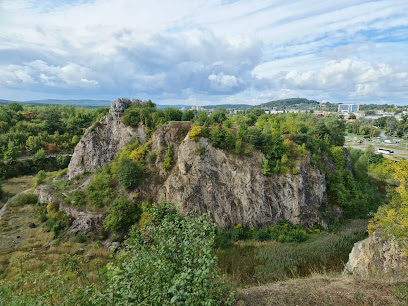
Ślichowice Rock Reserve
Explore the breathtaking beauty of Ślichowice Rock Reserve in Kielce, Poland, a stunning nature preserve filled with unique rock formations and vibrant wildlife.
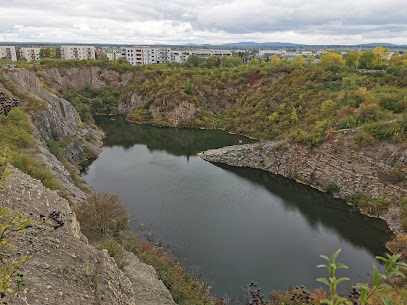
Kielce Museum of Toys and Play
Explore the enchanting Kielce Museum of Toys and Play, where nostalgia meets creativity in a delightful celebration of childhood memories.
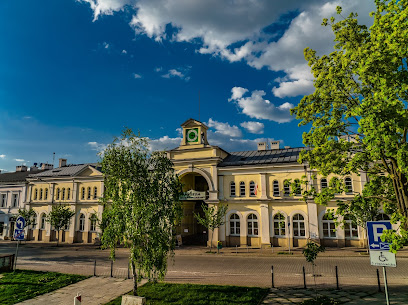
Kielce Botanical Garden
Explore the beauty of nature at Kielce Botanical Garden, a lush retreat in Poland showcasing diverse plant species and tranquil landscapes for all ages.
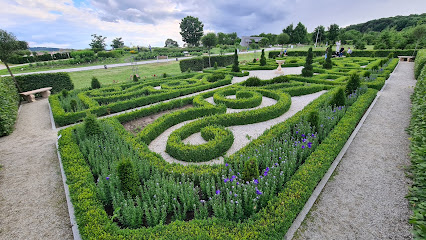
The National Museum in Kielce
Explore The National Museum in Kielce, where art, history, and culture converge in an inspiring journey through Poland's rich heritage.
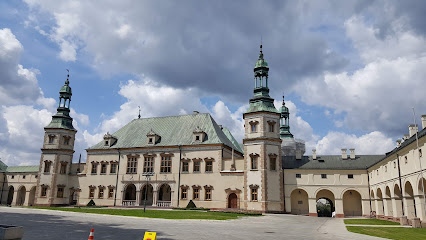
Kadzielnia Caves
Explore the mesmerizing Kadzielnia Caves in Kielce, a stunning natural attraction featuring breathtaking geological formations and rich historical significance.
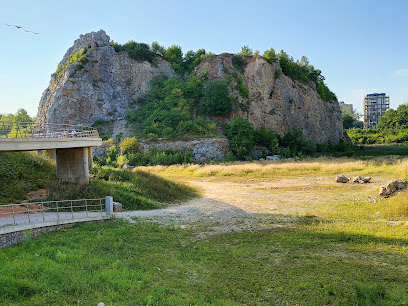
Park Linowy Kielce
Experience the thrill of adventure at Park Linowy Kielce with exhilarating rope courses and breathtaking views in the heart of Poland.
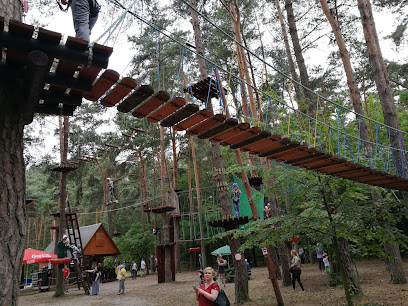
Wietrznia Nature Reserve
Explore the stunning Wietrznia Nature Reserve near Kielce, where nature's beauty and tranquility await every traveler.
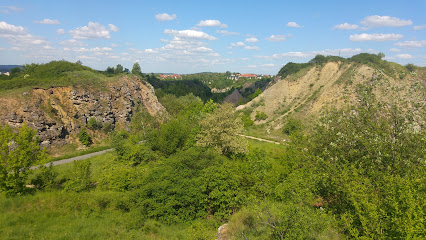
Geopark Kielce - Centre for Geo-Education
Explore the geological wonders and educational exhibits at Geopark Kielce - a must-visit for nature lovers and curious minds in Poland.
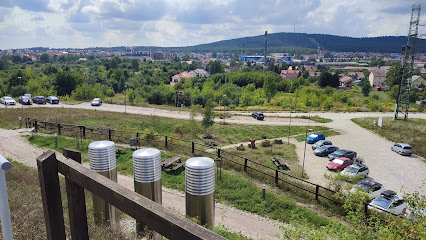
Kielce Castle Hill
Discover the captivating history and stunning views of Kielce Castle Hill, a must-visit attraction in the heart of Kielce, Poland.
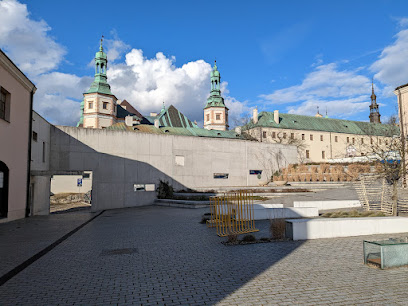
Biesak-Białogon Nature Reserve
Discover Biesak-Białogon Nature Reserve, a serene escape in Kielce, Poland, featuring stunning trails, diverse wildlife, and breathtaking natural beauty.
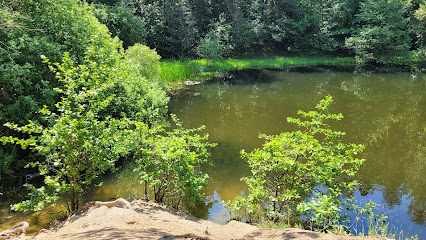
Boar Monument
Explore the Boar Monument in Kielce, a tribute to local heritage and a stunning piece of art, perfect for photography and leisurely walks.
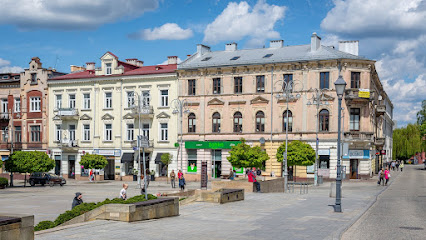
Kadzielnia Ziplines
Unleash your adventurous spirit at Kadzielnia Ziplines, where adrenaline meets stunning natural beauty in the heart of Kielce, Poland.
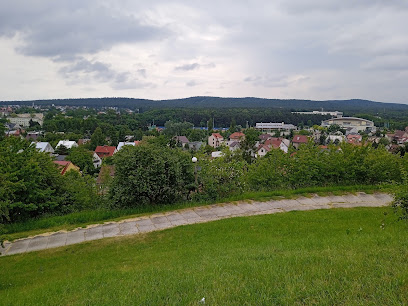
Kielce History Museum
Explore Kielce's rich history at the Kielce History Museum, a captivating local history museum showcasing the region's cultural heritage and fascinating past.
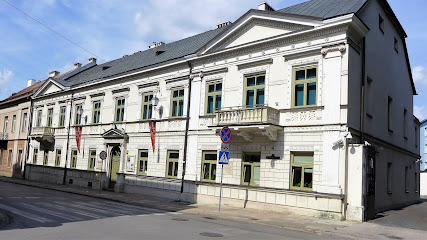
Kielce Center for Civic and Patriotic Thought
Discover the essence of Polish history and civic pride at the Kielce Center for Civic and Patriotic Thought, a must-visit museum in Kielce.
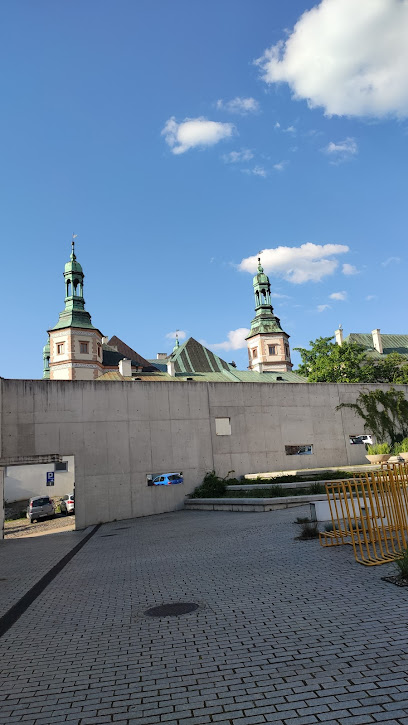
Essential places to dine
Karczma Pod Strzechą
Savor the essence of Poland at Karczma Pod Strzechą - where traditional flavors meet warm hospitality.
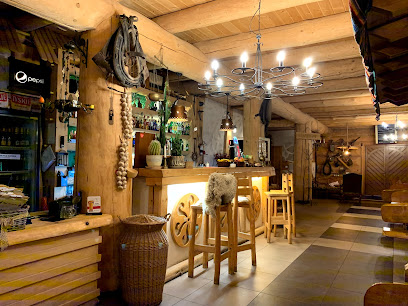
Restauracja U Kucharzy Kielce
Discover culinary delights at Restauracja U Kucharzy in Kielce – where Polish tradition meets Italian flair in every dish.
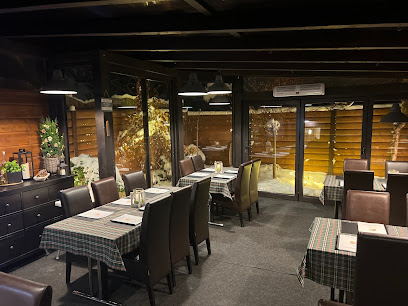
Kilo Mąki. Włoska pizza i potrawy
Experience authentic Italian flavors at Kilo Mąki in Kielce—home to delicious pizzas and pastas crafted with love.

Chinkalnia Restauracja Gruzińska
Experience authentic Georgian cuisine at Chinkalnia Restauracja Gruzińska in Kielce – a delightful escape into rich flavors and warm hospitality.
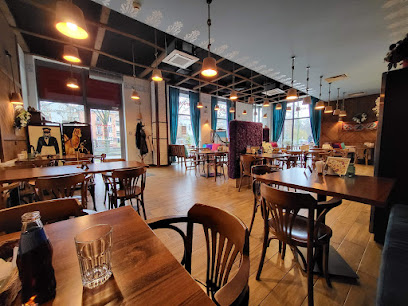
Żółty Słoń
Experience exquisite fusion cuisine at Żółty Słoń in Kielce - where Polish traditions meet global flavors for an unforgettable dining experience.
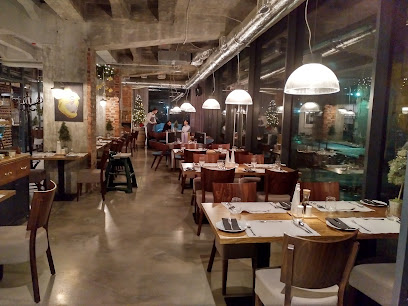
Restauracja PoRzeczka
Discover Restauracja PoRzeczka in Kielce for exquisite modern European cuisine infused with local flavors in a charming atmosphere.
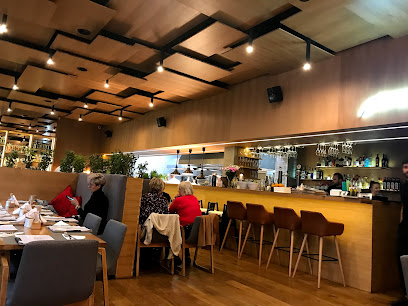
Ale! Szama
Experience authentic Polish cuisine at Ale! Szama in Kielce - where tradition meets flavor in a cozy setting.
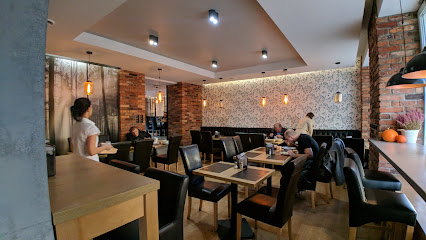
Tutti Santi Kielce
Experience authentic Italian flavors at Tutti Santi in Kielce - where every dish tells a story.
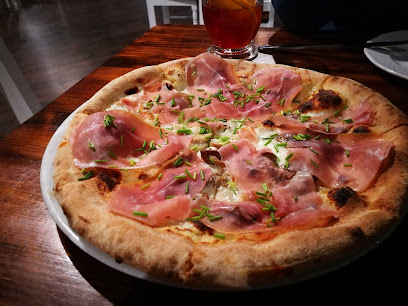
Plejada
Discover Plejada in Kielce - where delicious pizzas meet a warm atmosphere perfect for every traveler.

Roy Ben
Discover Roy Ben in Kielce: where European flavors meet steakhouse excellence for an unforgettable dining experience.
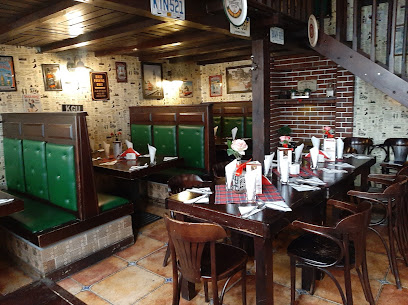
Shoemaker Irish Pub & Steakhouse | Restaurant
Discover Shoemaker Irish Pub & Steakhouse: A Culinary Gem in Kielce Blending Traditional Irish Fare with Gourmet Steaks in an Inviting Atmosphere.

Azzurro
Experience authentic Northern Italian cuisine at Azzurro in Kielce - where every dish tells a story.
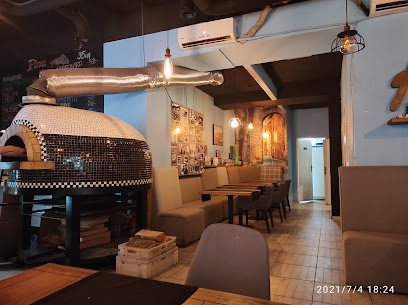
Sushi-Ya
Experience the best sushi and ramen at Sushi-Ya in Kielce, where every dish tells a story of tradition and flavor.
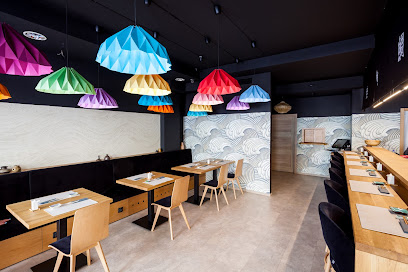
Antresola
Experience the warmth of family dining at Antresola in Kielce - where delicious food meets a welcoming atmosphere.
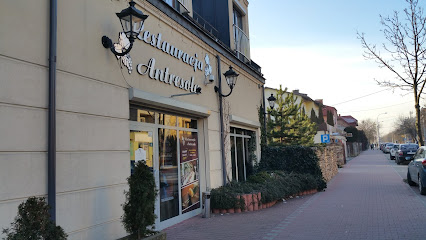
Sí Señor
Discover authentic Spanish flavors at Sí Señor in Kielce – where every dish tells a story and every bite delights your senses.
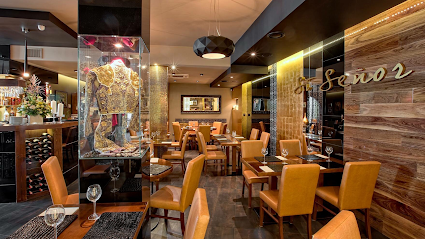
Markets, malls and hidden boutiques
Galeria Echo
Discover Galeria Echo in Kielce: A vibrant shopping mall offering diverse stores, dining, and entertainment options for an unforgettable retail experience.
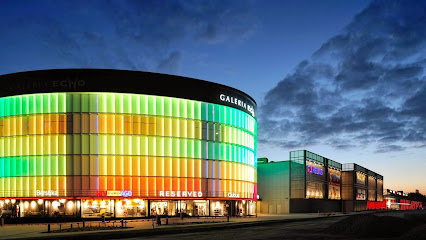
Galeria Korona
Discover Galeria Korona, Kielce's premier shopping mall, featuring a mix of fashion, dining, and entertainment for an unforgettable experience.
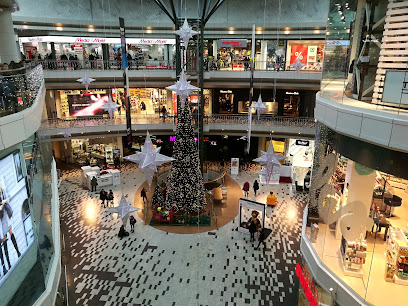
Pasaż Świętokrzyski
Explore Pasaż Świętokrzyski, a bustling shopping mall in Kielce, Poland, where shopping, dining, and entertainment come together in a vibrant atmosphere.
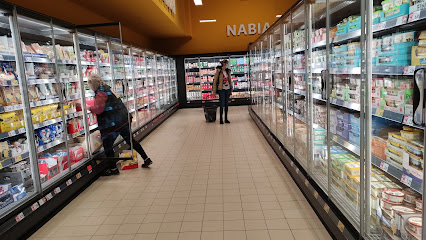
Empik
Explore Empik in Kielce for a world of books, gifts, and stationery that captures the essence of Polish culture.
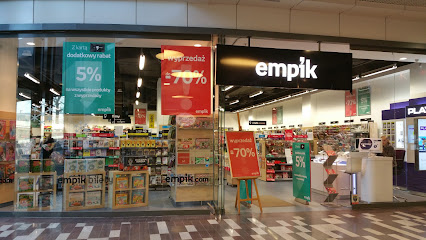
Action Kielce
Explore Action Kielce, your one-stop shop for unique gifts, DIY supplies, and local treasures in the heart of Kielce.
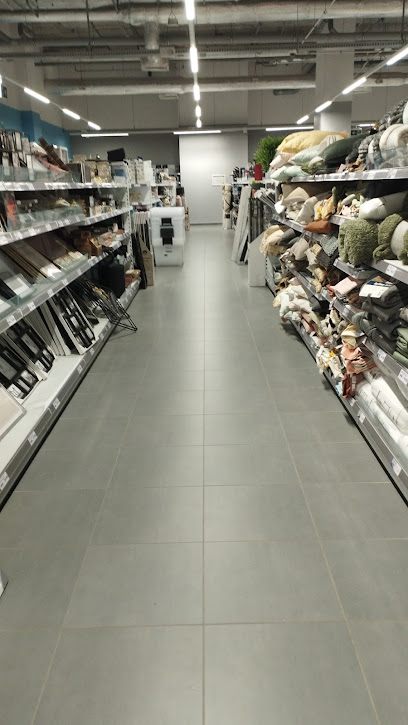
Best Market - Kielce - Ukraiński Sklep Spożywczy
Explore the flavors of Kielce at Best Market, your go-to grocery store for gourmet foods, local specialties, and international delights.
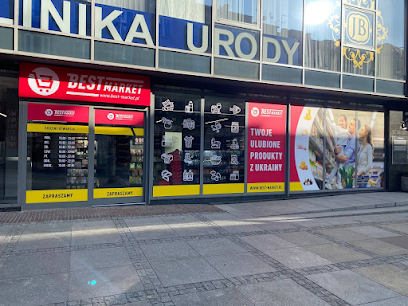
Harcerz
Discover Harcerz in Kielce, your ultimate destination for outdoor gear, clothing, and adventure essentials for every explorer.
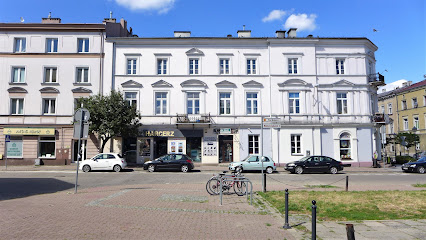
Fan Shop Korona Kielce
Discover the vibrant spirit of Kielce at Fan Shop Korona Kielce, your go-to spot for authentic team merchandise and local football culture.
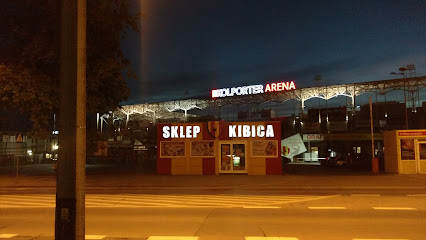
Galeria Czarnowska
Explore Galeria Czarnowska in Kielce: A vibrant shopping mall with a variety of stores, dining options, and family-friendly entertainment.
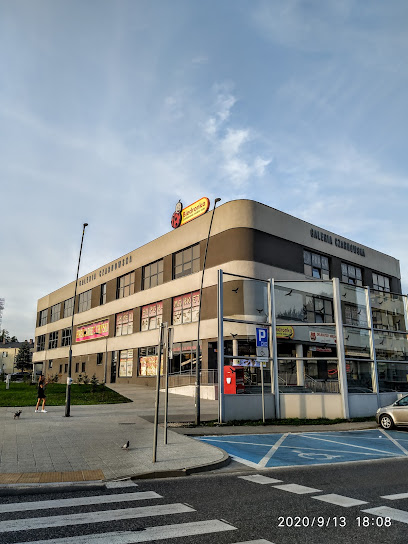
Кельце
Explore Kielce: A vibrant shopping mall filled with fashion, dining, and cultural experiences in the heart of Poland.
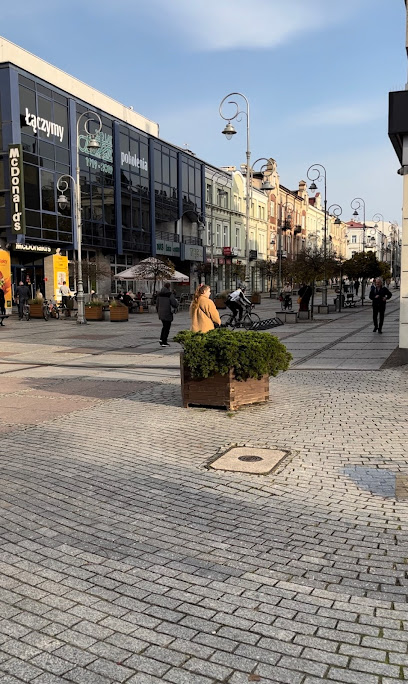
Butik Manufaktura Stylu
Explore unique fashion at Butik Manufaktura Stylu in Kielce, where local designers meet personalized styling for a distinctive shopping experience.
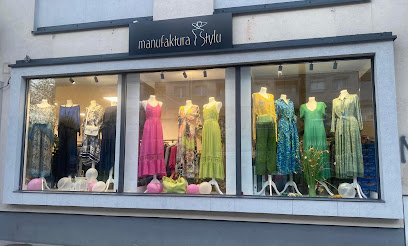
Grey Wolf Salon Kielce
Explore the latest fashion trends at Grey Wolf Salon Kielce, where style meets elegance in a delightful shopping experience.
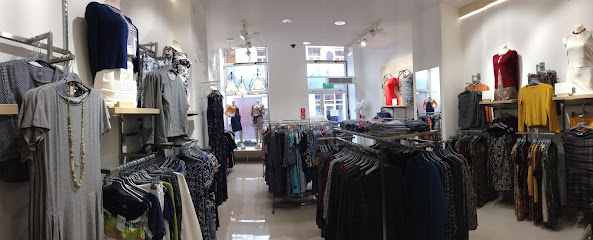
Pasaż Zielony
Discover the lively atmosphere of Pasaż Zielony, Kielce's premier shopping mall, offering a unique blend of fashion, food, and culture.

hike.pl
Discover top-quality outdoor gear and equipment at Hike.pl, Kielce's premier sporting goods store for adventurers and outdoor enthusiasts.
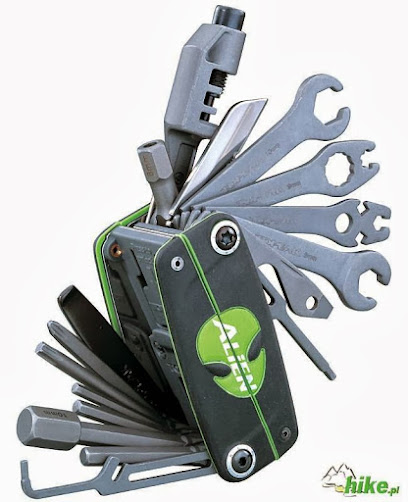
Natura drugstore
Explore Natura Drugstore in Kielce for an extensive selection of cosmetics, perfumes, and health products, perfect for every beauty enthusiast.
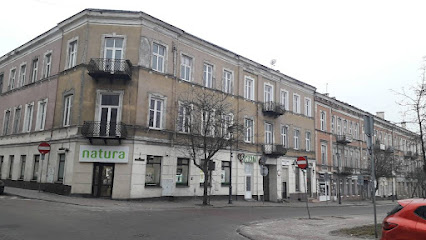
Essential bars & hidden hideouts
Shoemaker Irish Pub & Steakhouse | Restaurant
Discover the rich flavors and warm atmosphere of Shoemaker Irish Pub & Steakhouse in Kielce, where Irish tradition meets culinary excellence.
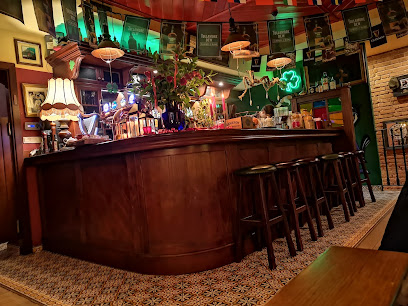
Restauracja Rockabilly Steakhouse and Whisky Bar
Discover delicious steaks and an extensive whisky selection at Restauracja Rockabilly Steakhouse and Whisky Bar in Kielce, a must-visit for food lovers.
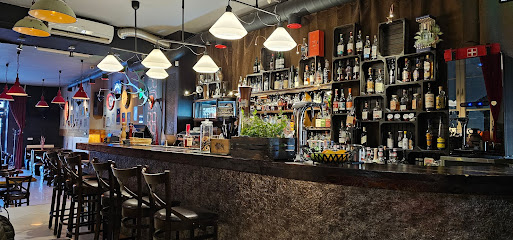
Craft Beer PUB
Discover the best local brews at Craft Beer PUB in Kielce, where every sip tells a story of tradition and passion in craft brewing.
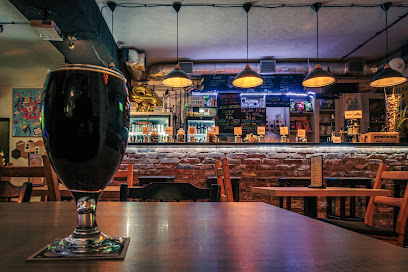
Old Brewery
Discover the Old Brewery in Kielce: A perfect blend of traditional brewing, modern dining, and vibrant local culture.
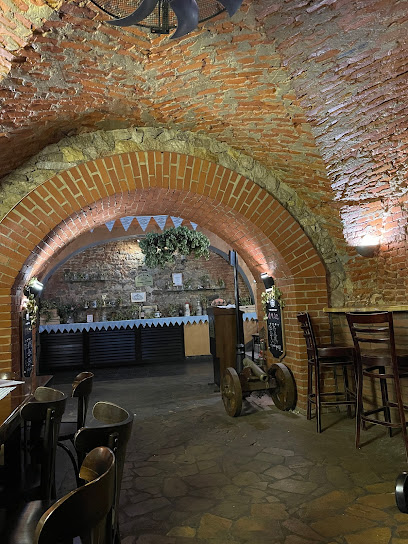
Ministerstwo Śledzia i Wódki
Discover authentic Polish flavors at Ministerstwo Śledzia i Wódki, a charming gastropub in Kielce specializing in herring and vodka.
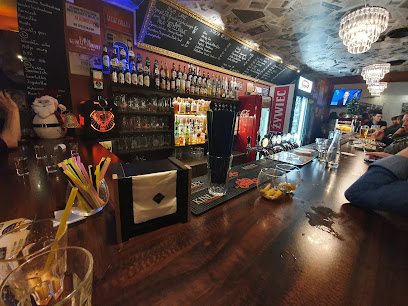
Klubokawiarnia Quest
Discover the vibrant blend of coffee culture and nightlife at Klubokawiarnia Quest in Kielce, where every visit promises unforgettable experiences.
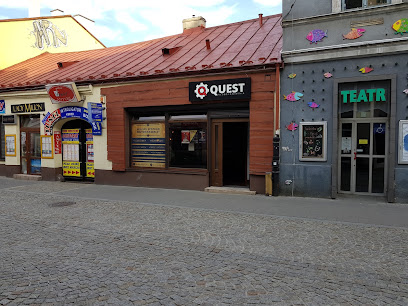
Rynek 11 Restaurant & Cocktail Bar
Discover the rich flavors of Poland at Rynek 11 Restaurant & Cocktail Bar in Kielce, where every dish tells a story.
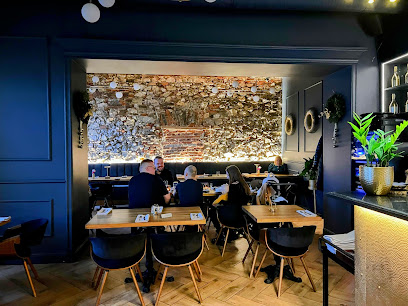
Pijalnia BANG
Discover the vibrant flavors of Kielce at Pijalnia BANG, a brewpub offering a unique selection of craft beers and a welcoming atmosphere.
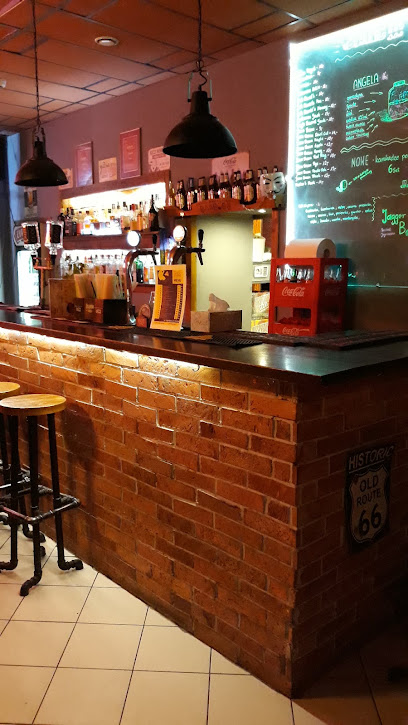
Hollywood
Discover the ultimate blend of sports, food, and fun at Hollywood Sports Bar in Kielce, where every game is a celebration!
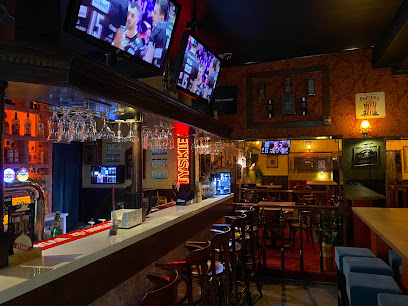
Tunel
Experience the best of Polish craft beer and delicious pub fare at Tunel Brewpub, Kielce's vibrant hub for beer lovers.
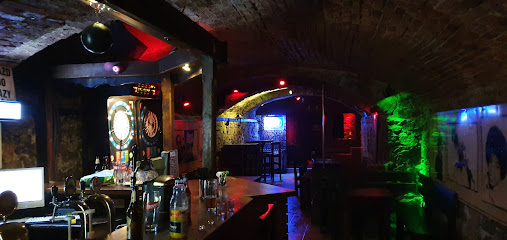
ShotBar ShotGun
Experience the vibrant nightlife of Kielce at ShotBar ShotGun, a lively pub offering a diverse drink selection and a warm, welcoming atmosphere.
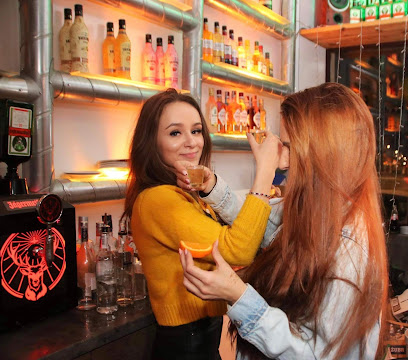
Bar Planty
Discover the vibrant atmosphere and delightful dishes at Bar Planty in Kielce, where self-service meets affordability in a charming setting.

Panta Rhei Pub :: Klub Bilardowy
Experience the vibrant sports culture at Panta Rhei Pub, Kielce's go-to destination for great food, drinks, and live sports.
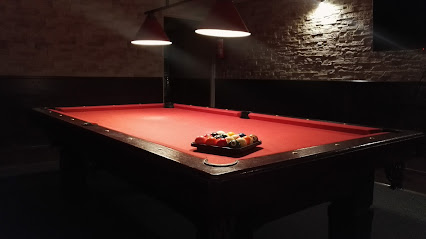
80's
Discover the lively 80's Brewpub in Kielce, where retro meets modern nightlife, featuring craft beers, cocktails, and an unforgettable atmosphere.
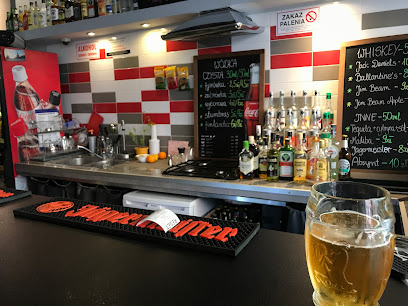
Pijalnia Wódki I Piwa Kielce
Experience the spirit of Poland at Pijalnia Wódki I Piwa Kielce, where local drinks and vibrant culture come together in a lively bar atmosphere.
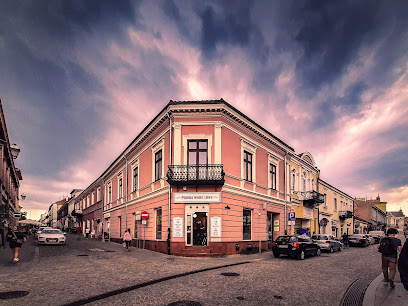
Local Phrases
-
- HelloCześć
[cheshch] - GoodbyeDo widzenia
[do veedzenia] - YesTak
[tak] - NoNie
[nye] - Please/You're welcomeProszę
[proshe] - Thank youDziękuję
[jyen-koo-yeh] - Excuse me/SorryPrzepraszam
[psheh-prah-sham] - How are you?Jak się masz?
[yak shyeh mahsh] - Fine. And you?Dobrze. A ty?
[doh-bzheh. ah tih] - Do you speak English?Czy mówisz po angielsku?
[chi moovish poh ahn-gyehl-skoo] - I don't understandNie rozumiem
[nye roh-zoo-myem]
- HelloCześć
-
- I'd like to see the menu, pleaseChciałbym zobaczyć menu, proszę
[hchya-woom zoh-bah-chich menu, proh-sheh] - I don't eat meatNie jem mięsa
[nye yem myen-sa] - Cheers!Na zdrowie!
[nah zdroh-vyeh] - I would like to pay, pleaseChciałbym zapłacić, proszę
[hchya-woom zah-plah-cheech, proh-sheh]
- I'd like to see the menu, pleaseChciałbym zobaczyć menu, proszę
-
- Help!Pomocy!
[poh-mo-tsi] - Go away!Idź sobie!
[eedzh soh-byeh] - Call the Police!Zadzwoń po policję!
[zahd-zvon poh poh-leet-syeh] - Call a doctor!Zadzwoń po lekarza!
[zahd-zvon poh leh-kah-zah] - I'm lostZgubiłem się
[zgoobee-wem sheh] - I'm illJestem chory
[yest-em hoh-ri]
- Help!Pomocy!
-
- I'd like to buy...Chciałbym kupić...
[hchya-woom koo-peech] - I'm just lookingTylko się rozglądam
[tih-ko sheh rohz-gwah-dahm] - How much is it?Ile to kosztuje?
[ee-leh toh kohs-too-yeh] - That's too expensiveTo jest za drogie
[toh yest zah droh-gyeh] - Can you lower the price?Czy możesz obniżyć cenę?
[chi mo-zhesh ohb-nee-zhoo-ch cheh-neh]
- I'd like to buy...Chciałbym kupić...
-
- What time is it?Która jest godzina?
[ktoo-rah yest goh-dzee-nah] - It's one o'clockJest pierwsza
[yest pyeh-roosh-za] - Half past (10)Pół do dziesiątej
[poow doh jeh-shon-teh] - MorningRano
[rah-no] - AfternoonPopołudnie
[poh-poo-wood-nyeh] - EveningWieczór
[vyeh-choor] - YesterdayWczoraj
[v-choh-rye] - TodayDziś
[jeesh] - TomorrowJutro
[yoo-tro] - 1Jeden
[yeh-den] - 2Dwa
[dvah] - 3Trzy
[tshih] - 4Cztery
[ch-teh-ri] - 5Pięć
[pyehnch] - 6Sześć
[sheshch] - 7Siedem
[syeh-dem] - 8Osiem
[oh-shyem] - 9Dziewięć
[jyeh-vyehnch] - 10Dziesięć
[jeh-shon-ch]
- What time is it?Która jest godzina?
-
- Where's a/the...?Gdzie jest...
[gdzyeh yest] - What's the address?Jaki jest adres?
[yah-ki yest ah-dres] - Can you show me (on the map)?Czy możesz mi pokazać (na mapie)?
[chi mo-zhesh mee poh-kah-zahch (nah mah-pyeh)] - When's the next (bus)?Kiedy jest następny (autobus)?
[kyeh-dee yest nah-stem-neh (ow-toh-boos)] - A ticket (to ....)Bilet (do ....)
[bee-let (doh)]
- Where's a/the...?Gdzie jest...
History of Kielce
-
Kielce's origins trace back to the 11th century when it was established as a market town by the Bishops of Kraków. The city's strategic location at the crossroads of important trade routes helped it thrive during the medieval period. Archaeological findings suggest that the area was inhabited even earlier, with evidence of settlements dating back to the Neolithic era.
-
In the 12th century, Kielce came under the rule of the Bishops of Kraków, who played a significant role in its development. The Bishops built a castle, which served as their residence and administrative center. This period marked the beginning of Kielce as a significant ecclesiastical and economic hub. The Bishops' Palace, now a museum, stands as a testament to this influential era.
-
The 16th and 17th centuries were a time of cultural and architectural growth for Kielce. The town saw the construction of several important buildings, including the Church of the Holy Trinity and the Collegiate Church. The influence of Renaissance and Baroque styles is evident in these structures, reflecting the broader European artistic movements of the time.
-
The 19th century brought significant industrial development to Kielce. The discovery of rich mineral deposits, including iron ore and limestone, spurred the growth of mining and metallurgy industries. The establishment of the Warsaw-Vienna Railway in 1845 further boosted the local economy, transforming Kielce into an industrial center. This era also saw the expansion of educational institutions, including the founding of the School of Mining.
-
Kielce, like many Polish cities, suffered greatly during World War II. The city was occupied by Nazi Germany, and its Jewish community faced horrific persecution. In 1946, a tragic event known as the Kielce Pogrom occurred, where 42 Jewish Holocaust survivors were killed by local residents and police forces. This dark chapter in Kielce's history serves as a somber reminder of the atrocities of the war and its aftermath.
-
After World War II, Kielce underwent significant rebuilding and modernization. The city's infrastructure was redeveloped, and new industries were established, contributing to economic recovery. The establishment of the Kielce University of Technology and other educational institutions marked a new era of academic growth. Today, Kielce is known for its vibrant cultural scene, including numerous festivals, theaters, and museums.
-
Kielce boasts a rich cultural heritage, with numerous historical landmarks and modern attractions. The National Museum, housed in the former Bishops' Palace, showcases the city's artistic and historical treasures. The Kadzielnia Nature Reserve, with its scenic limestone formations and outdoor amphitheater, offers a unique blend of natural beauty and cultural events. Kielce's lively arts scene, including the annual Kielce Theater Festival, continues to attract visitors from around the world.
Kielce Essentials
-
Kielce is located in the Świętokrzyskie Voivodeship in Poland. The nearest major airport is Warsaw Chopin Airport, approximately 180 kilometers away. From Warsaw, you can take a direct train to Kielce, which typically takes around 2.5 to 3 hours. Alternatively, buses operated by companies like FlixBus connect Warsaw to Kielce. If you are driving, the A1 and S7 highways provide a convenient route to Kielce.
-
Kielce has a well-developed public transportation system, including buses and taxis. The ZTM Kielce buses are a reliable way to get around the city and its suburbs. For more flexibility, consider renting a car from one of the local or international car rental companies available in the city. Cycling is also an option, with several bike rental spots and dedicated bike lanes.
-
The official currency in Poland is the Polish Złoty (PLN). Credit and debit cards are widely accepted in Kielce, including in hotels, restaurants, and larger shops. However, it is advisable to carry some cash for smaller establishments, markets, and rural areas. ATMs are plentiful and can be found throughout the city. Currency exchange services are available at banks and exchange bureaus.
-
Kielce is generally a safe city for tourists. Standard precautions should be taken, such as avoiding poorly lit areas at night and safeguarding personal belongings in crowded places. While there are no specific high-crime areas targeting tourists, always stay vigilant and aware of your surroundings.
-
In case of emergency, dial 112 for immediate assistance from police, fire, or medical services. Kielce has several hospitals and clinics for medical emergencies. It is recommended to have travel insurance that covers medical emergencies. Pharmacies are widespread and can provide over-the-counter medications for minor health issues.
-
Fashion: Do dress modestly, especially when visiting religious sites. Avoid overly revealing clothing. Religion: Do respect local customs and traditions. Cover your head when entering churches. Public Transport: Do be respectful and give up your seat to elderly passengers. Don't eat or drink on public transport. Greetings: Do greet people with a handshake or a friendly 'Dzień dobry' (Good day). Eating & Drinking: Do try local delicacies like 'kielbasa' and 'pierogi'. Don’t refuse hospitality, as it is considered impolite.
-
To experience Kielce like a local, visit the local markets such as the popular 'Plac Wolności' where you can buy fresh produce and traditional Polish goods. Engage with locals, who are often friendly and willing to share stories about the city's history and culture. Don't miss exploring the Świętokrzyskie Mountains for outdoor activities. For a unique experience, visit the Geopark Kielce and the Kadzielnia Nature Reserve.
Trending Landmark in Kielce
-
Kadzielnia Nature Reserve
-
Kielce Market Square
-
Museum of the Kielce Countryside
-
Binkowski Resort and Waterpark
-
Stanisław Staszic Municipal Park
-
Park Rozrywki Fly Sky
-
Ślichowice Rock Reserve
-
Bazylika katedralna Wniebowzięcia NMP w Kielcach
-
Kielce Cultural Center
-
Kielce Botanical Garden
-
The National Museum in Kielce
-
Centrum Neandertalczyka
-
Kadzielnia Caves
-
Henryk Sienkiewicz Statue
-
Wietrznia Nature Reserve
Nearby Cities to Kielce
-
Things To Do in Radom
-
Things To Do in Tarnow
-
Things To Do in Krakow
-
Things To Do in Czestochowa
-
Things To Do in Lodz
-
Things To Do in Rzeszow
-
Things To Do in Lublin
-
Things To Do in Gliwice
-
Things To Do in Warsaw
-
Things To Do in Bielsko-Biala
-
Things To Do in Zakopane
-
Things To Do in Opole
-
Things To Do in Poprad
-
Things To Do in Ostrava
-
Things To Do in Prešov











